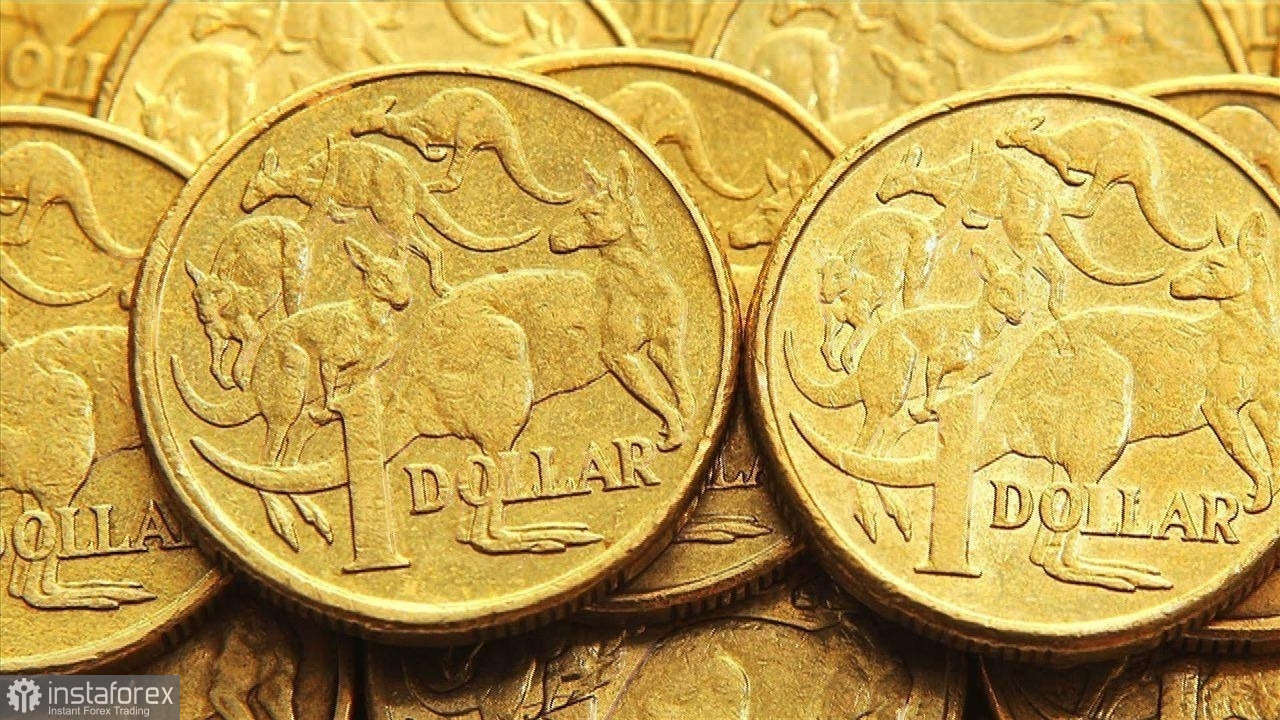The AUD/USD pair hit a new 18-month price high on Wednesday, driven by the greenback's broad weakness and encouraging news from China. Meanwhile, AUD/USD traders ignored the monthly inflation report released the same day in Australia. The release did not favor the aussie, but market participants focused on other fundamental factors. Primarily, they concentrated on the increasing dovish expectations regarding the Federal Reserve's future actions. In addition, the spike in interest in risk assets contributed to the AUD/USD's upward trend. Nonetheless, considering the ambiguous results of the Reserve Bank of Australia's (RBA) September meeting, the inflation report should not be ignored.

In brief, following the September meeting, the RBA kept all monetary policy parameters unchanged but softened its rhetoric slightly. For the first time since March this year, the central bank has not discussed the possibility of raising the interest rate. The agenda included only two options: maintaining a wait-and-see approach and easing monetary policy. Moreover, RBA Governor Michele Bullock softened some of her rhetoric. On the one hand, she stated that a rate cut is not planned for the near future. On the other hand, Bullock acknowledged that the Board has started discussing whether it might be time to change the policy message.
From a formal standpoint, nothing has changed: the Australian central bank maintained its wait-and-see stance and stated that it is not ready to lower rates in the near future. However, the September meeting differed from previous ones, with a barely noticeable shift toward a more dovish tone.
According to several experts, the RBA's rhetoric may soften even further if the quarterly Consumer Price Index (CPI) data shows a slowdown in inflation in the third quarter. The report is expected in October, so the central bank avoided making hints at the September meeting and instead used the standard phrase that everything would depend on incoming data.
Nevertheless, the apparent rejection of a hawkish scenario is already a signal. So, the question is not if the RBA will cut rates but when.
In this context, the report published on Wednesday indicates that a slowdown in inflation plays a significant role. The CPI fell in August to 2.7%, against the forecasted drop of 2.8%. This is the first inflation indicator to fall within the RBA's target range of 2% to 3%. Secondly, the index has shown a consistent downward trend over the past three months, meaning we can now talk about an established trend.
We can't ignore that monthly inflation is slowing on a stable basis. This fact will inevitably be reflected in the dynamics of the quarterly data (which the RBA primarily focuses on). As mentioned earlier, we will learn the data for the third quarter next month, and the RBA's next meeting will be in November. If quarterly inflation falls more than expected, the RBA will begin to discuss easing monetary policy more explicitly rather than with mere hints. Although the central bank is likely to keep the rate at the current level until the end of 2024, dovish verbal signals could put significant pressure on the aussie.
Currently, AUD/USD traders ignore the "clouds gathering over the aussie". The pair is rising amid growing dovish expectations regarding the Fed's further actions (the probability of a 50-point rate cut in November has increased to 60%) and recent news from China. As is known, the People's Bank of China (PBOC) presented a stimulus package to the public. The PBOC announced plans to reduce the funds banks need to keep in reserve and announced a reduction in the key short-term interest rate. In addition, the central bank introduced a package of stimulus measures aimed at supporting the housing market in China, including lowering mortgage costs and easing rules for purchasing second-hand homes.
As is well known, China is Australia's largest trading partner, so the Australian dollar responded positively to this news.
Thus, on the one hand, the growth of AUD/USD is justified. The driving force behind the upward movement is the greenback, which is weakening across the market. On the other hand, amid slowing inflation in Australia, the pair has reached a one-and-a-half-year price high but failed to consolidate above the resistance level of 0.6890 (the upper line of the Bollinger Bands indicator on the D1 timeframe). Therefore, it makes sense to consider long positions only after buyers consolidate above this target, meaning when they have established themselves in the 0.69 area. In this case, the path will open to the key price barrier at the 0.7000 level.
 English
English 
 Русский
Русский Bahasa Indonesia
Bahasa Indonesia Bahasa Malay
Bahasa Malay ไทย
ไทย Español
Español Deutsch
Deutsch Български
Български Français
Français Tiếng Việt
Tiếng Việt 中文
中文 বাংলা
বাংলা हिन्दी
हिन्दी Čeština
Čeština Українська
Українська Română
Română

